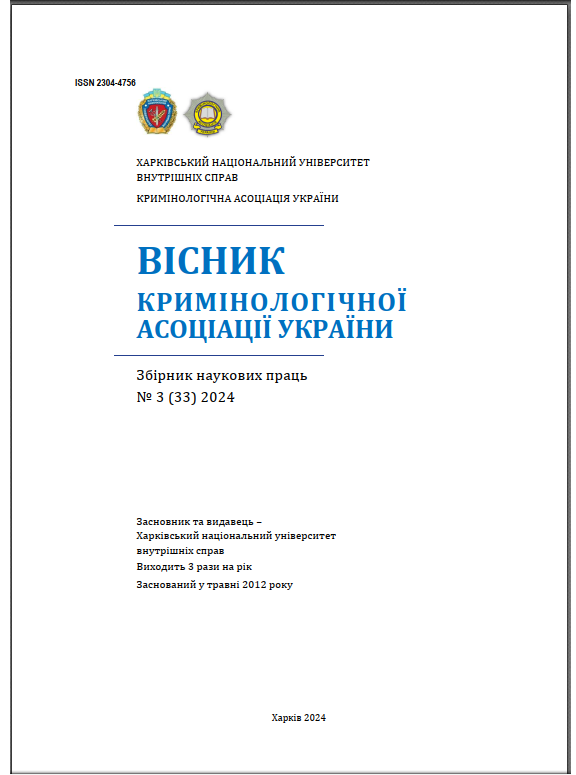THE PLACE OF ADMINISTRATIVE LAW NORMS IN THE SYSTEM OF LEGAL PRINCIPLES OF PREVENTIVE ACTIVITIES OF INTERNAL SECURITY UNITS
Main Article Content
Abstract
It is concluded that the legal principles of preventive activities of internal
security units of the National Police of Ukraine should be characterized as a set of
fundamental provisions established by regulatory legal acts of various legal force,
which contain its main directions, forms and methods of implementation, objects
of influence, as well as the purpose of implementation. It is noted that today the
system of relevant principles is quite limited. Basically, the relevant regulatory
legal acts: 1) regulate the direct functioning of internal security units, outline the
scope of counteraction to offenses that impede the effective work of the National
Police of Ukraine; 2) determine the directions of implementation of relevant
preventive measures implemented within the framework of such counteraction;
3) establish the obligations of employees of the National Police of Ukraine to
protect human rights and freedoms, which they implement as representatives of a
law enforcement agency, and the violation of which is the object of preventive
measures of internal security units.
It is noted that today it is necessary to adopt a unified regulatory legal act
on the prevention of offenses, which should define the objects and subjects of
such activities, their functions, general and individual preventive measures, their
consequences, legal protection of the person in respect of whom prevention of
offenses is carried out, etc.
It is summarized that among the legal principles of the studied sphere of
preventive activity, administrative and legal norms occupy a decisive place. They
establish the powers of employees of the internal security units of the NPU to
carry out measures related to the prevention of offenses, including in relation to
certain areas of internal security support (record keeping, access regime to the
premises of the NPU, use of certain means of operational and investigative
activity, anti-corruption activity).
Article Details

This work is licensed under a Creative Commons Attribution 4.0 International License.
